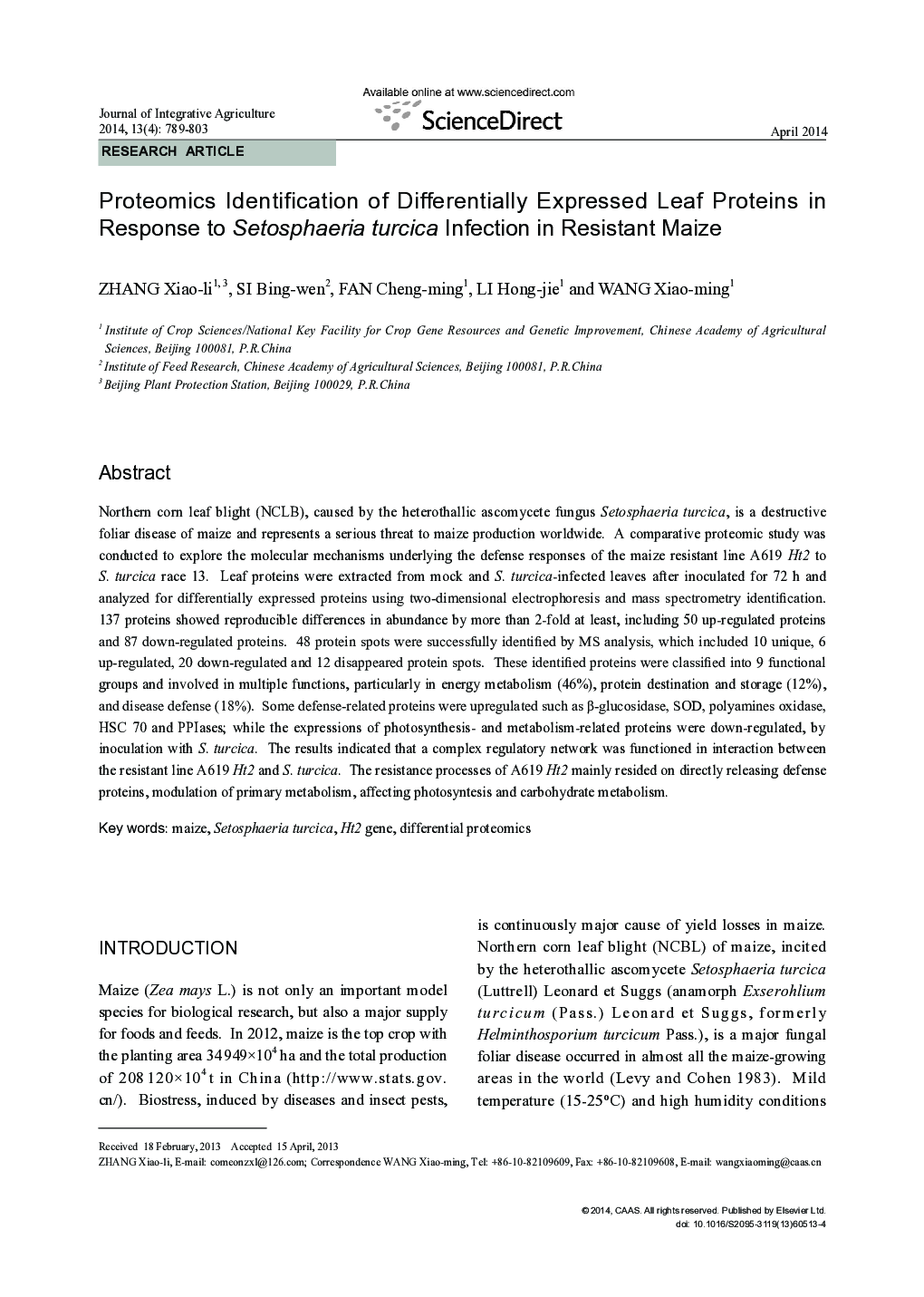| Article ID | Journal | Published Year | Pages | File Type |
|---|---|---|---|---|
| 4494604 | Journal of Integrative Agriculture | 2014 | 15 Pages |
Northern corn leaf blight (NCLB), caused by the heterothallic ascomycete fungus Setosphaeria turcica, is a destructive foliar disease of maize and represents a serious threat to maize production worldwide. A comparative proteomic study was conducted to explore the molecular mechanisms underlying the defense responses of the maize resistant line A619 Ht2 to S. turcica race 13. Leaf proteins were extracted from mock and S. turcica-infected leaves after inoculated for 72 h and analyzed for differentially expressed proteins using two-dimensional electrophoresis and mass spectrometry identification. 137 proteins showed reproducible differences in abundance by more than 2-fold at least, including 50 up-regulated proteins and 87 down-regulated proteins. 48 protein spots were successfully identified by MS analysis, which included 10 unique, 6 up-regulated, 20 down-regulated and 12 disappeared protein spots. These identified proteins were classified into 9 functional groups and involved in multiple functions, particularly in energy metabolism (46%), protein destination and storage (12%), and disease defense (18%). Some defense-related proteins were upregulated such as β-glucosidase, SOD, polyamines oxidase, HSC 70 and PPIases; while the expressions of photosynthesis- and metabolism-related proteins were down-regulated, by inoculation with S. turcica. The results indicated that a complex regulatory network was functioned in interaction between the resistant line A619 Ht2 and S. turcica. The resistance processes of A619 Ht2 mainly resided on directly releasing defense proteins, modulation of primary metabolism, affecting photosyntesis and carbohydrate metabolism.
